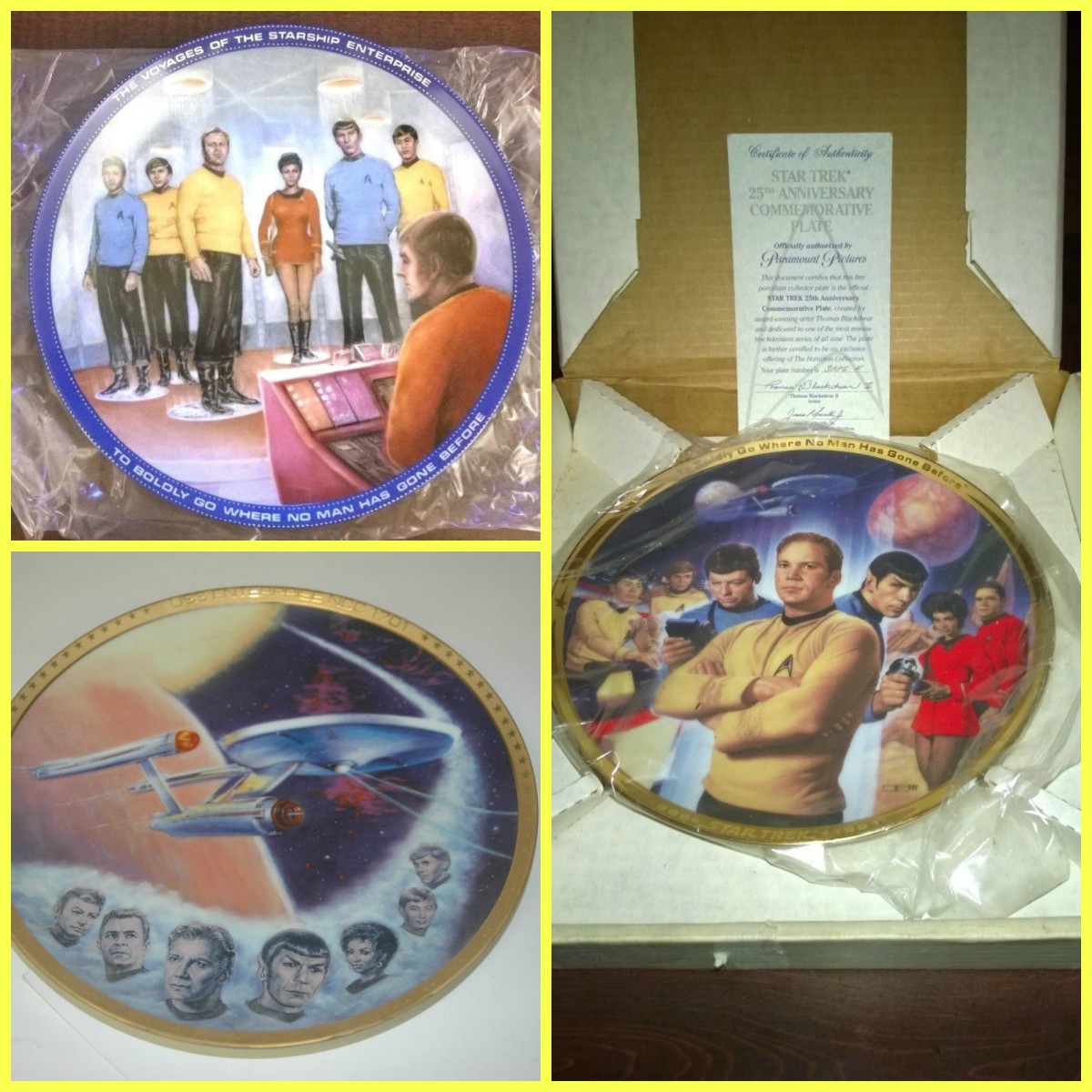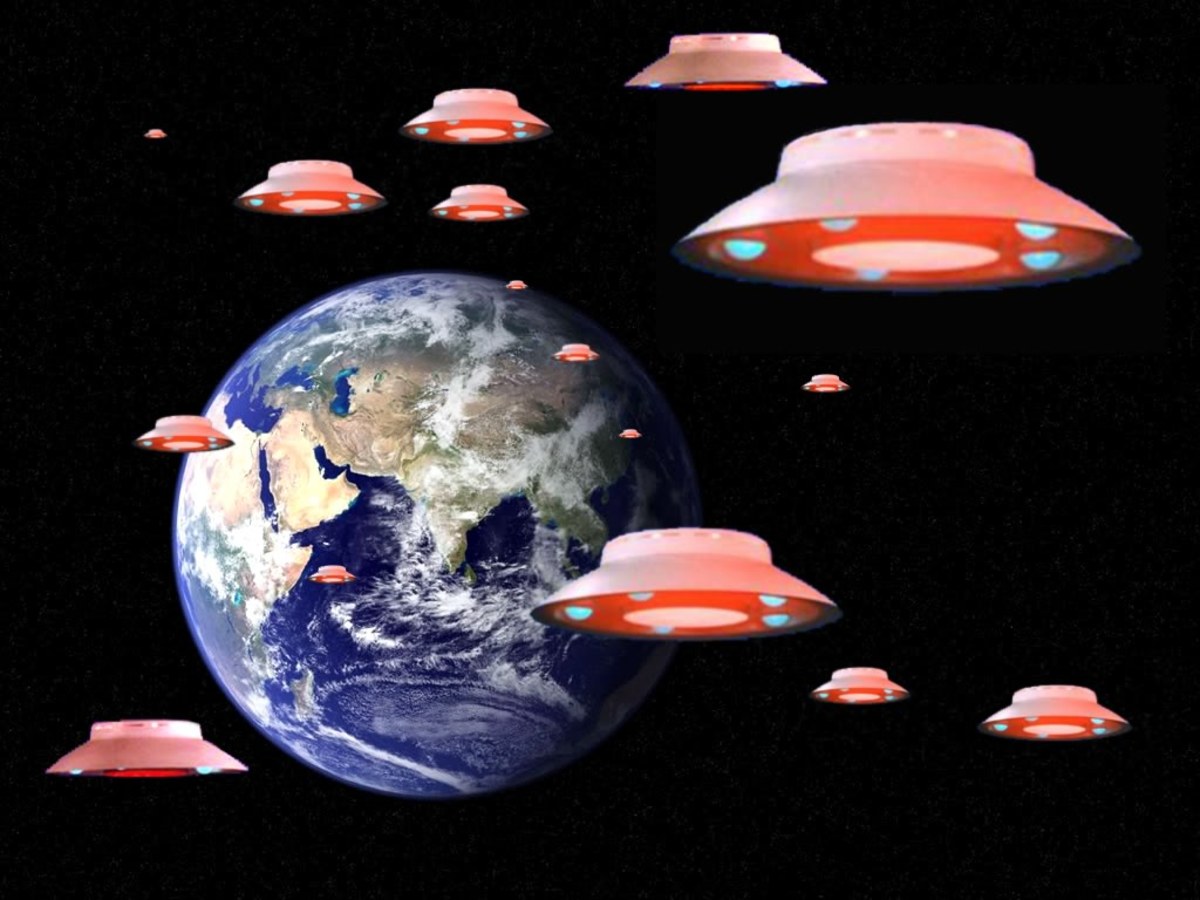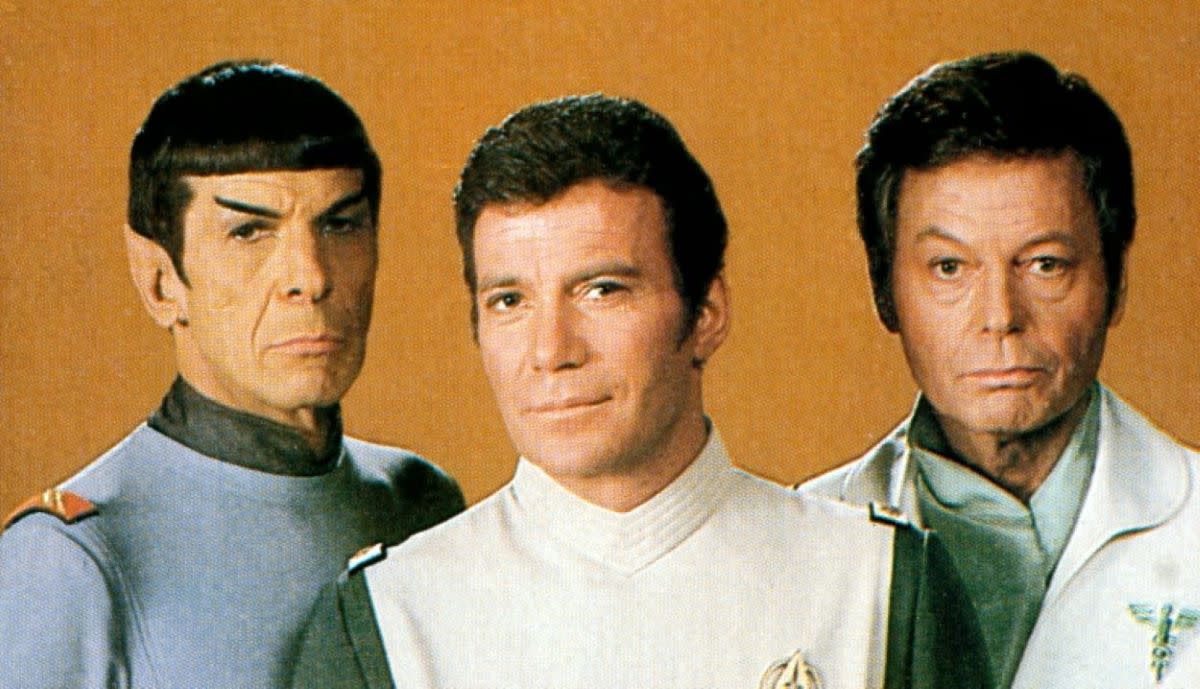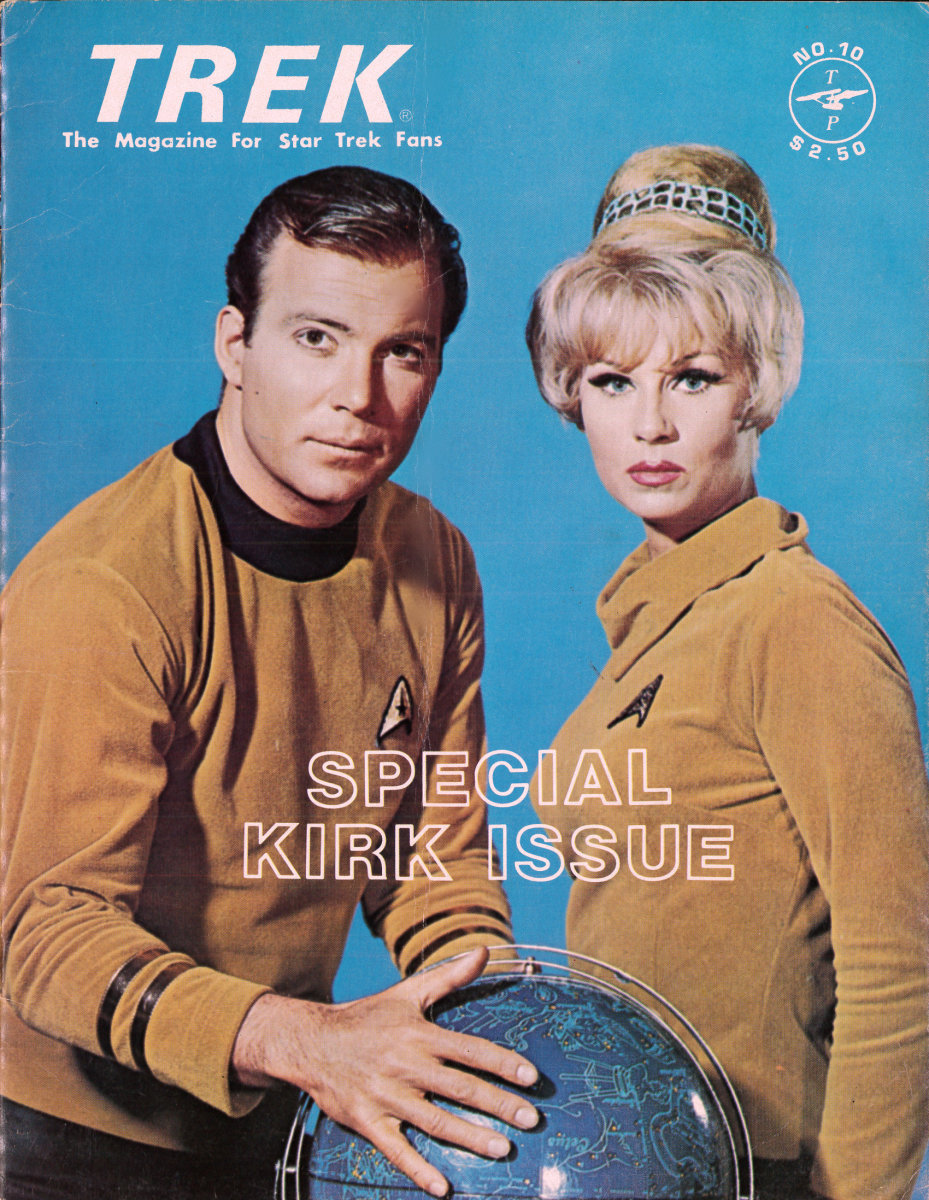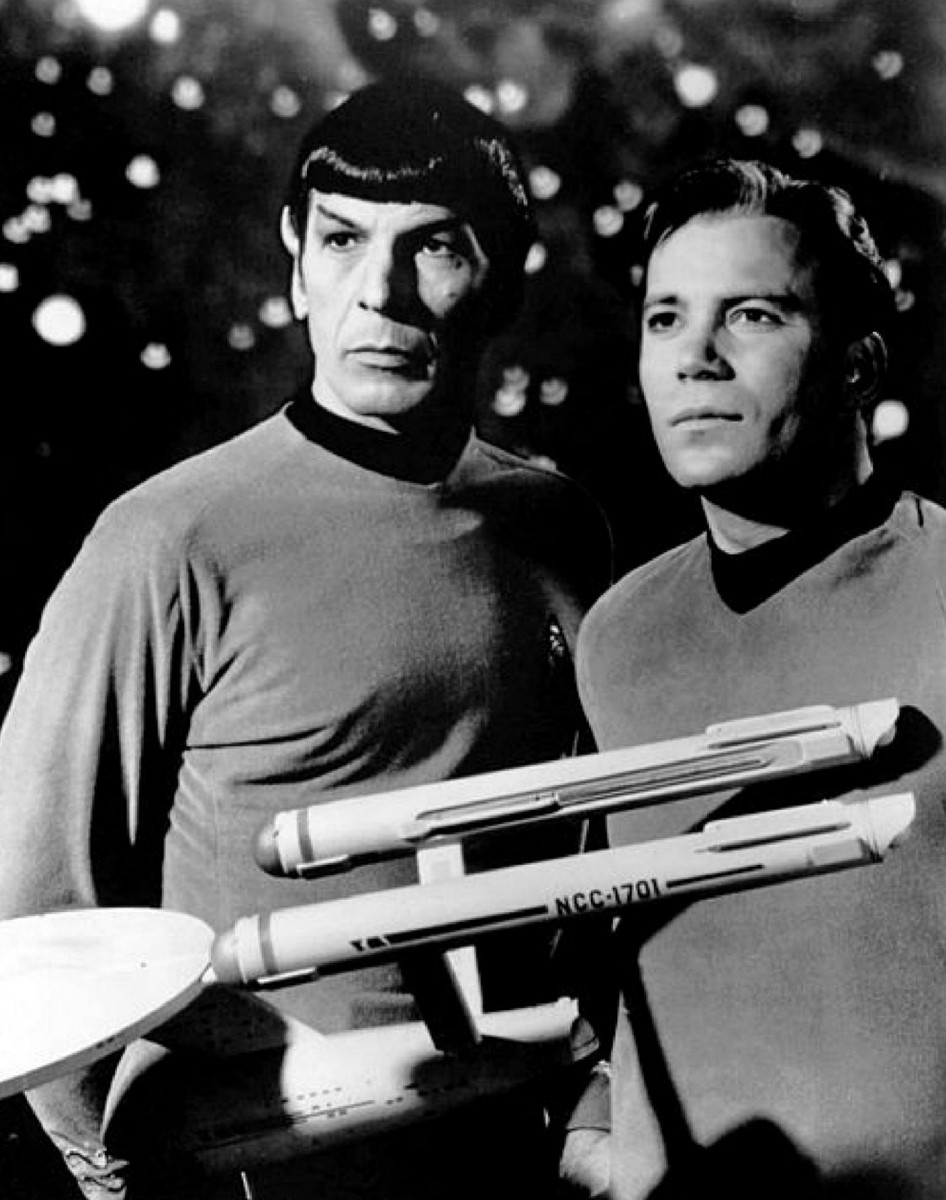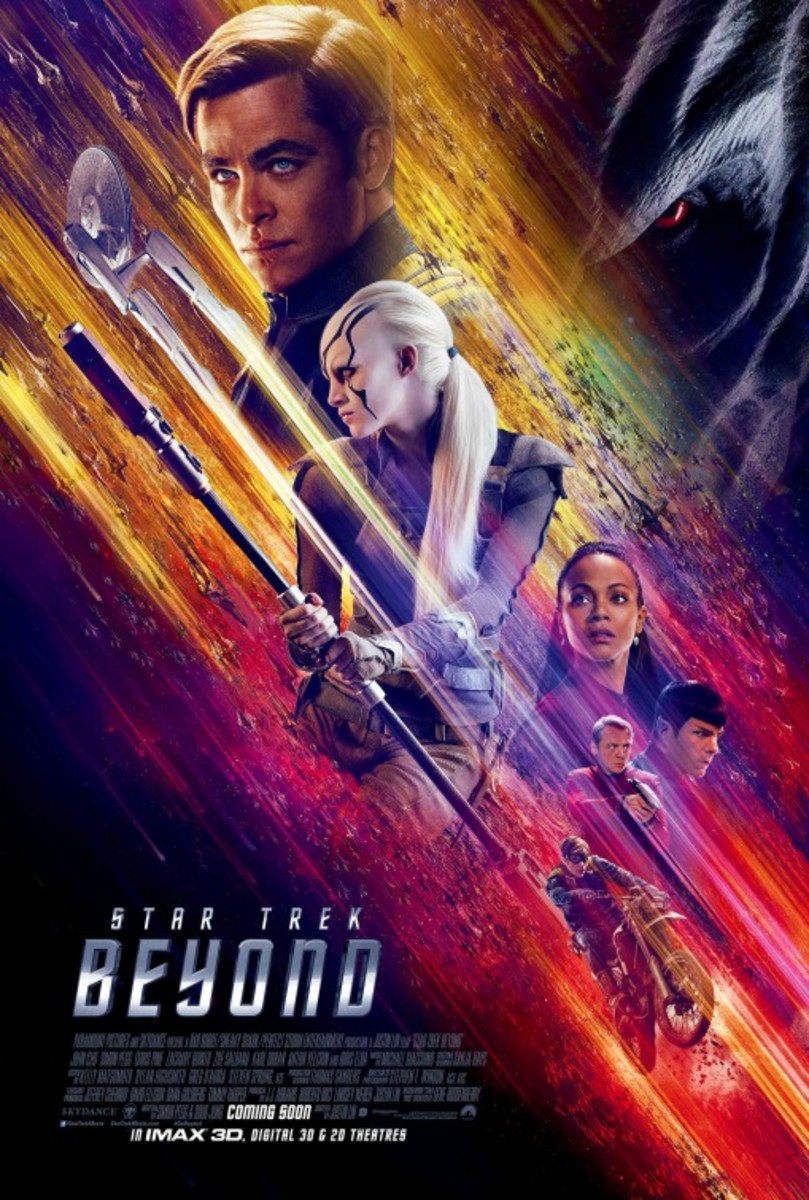- HubPages»
- Entertainment and Media»
- Movies & Movie Reviews»
- Science Fiction & Fantasy Films»
- Science Fiction
STAR TREK
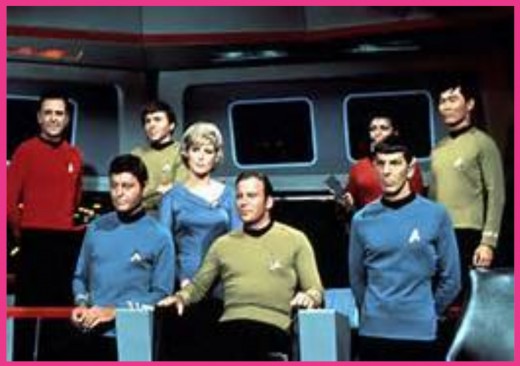
When Star Trek first debuted on NBC in 1966, many wondered how long it would last on TV -- as well as whether or not it'd be remembered fifty to a hundred (or even a thousand-plus) years from now -- which must have also concerned its creator, Gene Roddenberry.
While the original TV series only lasted three years (two less than the U.S.S. Enterprise's original five-year journey), it was the start of one of the most successful and enduring show business franchises of all time -- giving us not only some of the greatest pop culture heroes and villains of all time (Kirk, Spock, Picard, Klingons, etc.), but also some of most profound and relevant moments in TV history, reflecting the times that several generations of audiences lived through. Star Trek would also affect the real world that we lived in -- and not just for those who've actually traveled into outer space (as the successful U.S. moon landings, NASA space shuttle missions, International Space Station, etc., have long since proven). And it gave us hope for a better future -- despite the many problems that we've had to deal with for almost a century, and are still dealing with today (and no doubt in the future).
The 1960's
When Gene Roddenberry first thought up Star Trek in 1964, he called it "Wagon Train to the stars" (referring to the classic TV western) -- after all, Roddenberry did write a number of episodes for CBS's Have Gun, Will Travel during the late-1950's. But Roddenberry also found inspiration in Jonathan Swift's novel Gulliver's Travels, which combined fantasy and social commentary -- which also defined the best of science-fiction, from the works of H.G. Wells and Ray Bradbury to the original Twilight Zone TV series.
Dreaming up a science-fiction TV series that's both smart and exciting is easy -- making it a reality is a lot different and definitely more complicated than you'd realize, given the fact that many Sci-fi movies and TV series during the 1950's and early-1960's were low-budgeted and appealed many to younger audiences (though there were exceptions -- among them, The War Of The Worlds [1953], Forbidden Planet [1956], and the original Outer Limits TV series).
By 1966, Roddenberry tried to get MGM (which had co-produced his short-lived TV creation The Lieutenant from a few years ago) interested in financing and co-producing Star Trek -- but nothing came of it. Luckily, Desilu Productions (founded by Lucille Ball and Dezi Arnaz) -- best known for producing such classic TV shows as I Love Lucy and The Untouchables -- agreed to co-finance (with NBC) Star Trek, which debuted in the fall of that year. (That same year would also see the debut of another classic TV show produced by Desilu -- Mission: Impossible, which aired on CBS, which along with Paramount, now co-owns the rights to not only the Star Trek and M:I franchises, but also other TV properties produced by CBS, Paramount, and Desilu throughout most of their long and respective histories).
The pilot episode for the original Star Trek TV series -- titled "The Cage" -- was notable for several reasons. Though Leonard Nimoy appeared in the pilot as Mr. Spock, the half-human and half-Vulcan starship officer (who would become one of the franchise's most popular and enduring characters) -- William Shatner, who would achieve success and pop culture status as U.S.S. Enterprise captain James T. Kirk on the original TV series (and beyond), didn't; film actor Jeffery Hunter played Capt. Christopher Pike -- Kirk's predecessor -- in the original TV pilot. As a result of showing the pilot to NBC executives, Roddenberry ended up retooling and revamping it into the version that would air on TV by the fall of 1966. (Scenes featuring Hunter from the first TV pilot were used in the the two-part 1966 episode "The Menagerie.")
When Star Trek debuted on TV in 1966, media critics panned the series and its premise in their reviews. Also, the original TV series wasn't exactly a ratings success during its three-year run (even Gene Roddenberry's father didn't care much for it). Of course, it should be noted that most Sci-fi TV series of that period -- including CBS's Lost In Space -- were considered "kid's stuff" and nothing more, since they appealed mainly to younger audiences. And the special effects on the original Star Trek TV series -- however imaginative and innovative they were -- were old-fashioned by today's standards (unlike today's technology used by modern filmmakers and special effects artists).
And yet, the original Star Trek TV series had much to offer -- it had one of the best ensemble casts in the media's history, headed by Shatner and Nimoy, and which included DeForest Kelley as Dr. Leonard "Bones" McCoy (whose verbal spars with the emotionless, yet more human-than-most Mr. Spock are still fondly remembered by generations of audiences) and Nichelle Nichols as Lt. Uhura (who shared an on-air interracial kiss with Capt. Kirk towards the end of the original TV series' run), as well as give us the war-like Klingons, one of the most famous (or infamous, take your pick) alien races in pop culture history. It also attracted a Who's Who of film and TV stars (both well-known and soon-to-be) who guest-starred on the TV series, including Ricardo Montalban, who played Khan in the 1967 episode "Space Seed" (a springboard for the franchise's renewed success during the 1980's) -- not to mention literary greats Harlan Ellison and Robert Bloch, who wrote several episodes. And many of the classic episodes focused on the hot-button subjects of the 1960's -- including civil rights and the Vietnam War -- that defined not only Star Trek, but also the best that the Sci-fi genre had to offer, both then and now. Most of all, the TV series reminded us that the future held great promise -- and that we had the power and responsibility to help shape it for the better, which remains important even today.
In 1969, NBC cancelled Star Trek due to low Nielsen ratings -- but the original TV series and mythos' popularity and legend would continue to grow, thanks to not only reruns being shown in syndication, but also the die-hard fans (or "Trekkies") whose love and devotion for all things Star Trek would increase tenfold over the coming decades. And by the 1970's, those who were introduced to Star Trek via reruns in syndication would truly recognize it as the TV classic that it was meant to be -- and strengthen a franchise which would extend to comic books, novels, various merchandise, and much more, while altering and influencing the future of the science-fiction genre into the present century.
The 1970's
In the fall of 1973, the majority of the cast from the original Star Trek TV series, including William Shatner and Leonard Nimoy, reunited for an animated TV version which Paramount co-produced with Filmation and aired on NBC as part of its Saturday morning line-up (with Gene Roddenberry serving as a creative consultant). Though it only lasted a single season, the animated TV version of Star Trek was and remains one of the better animated TV shows based on a live action show business property -- and one of the better efforts from Filmation -- which also served to further increase the franchise's popularity.
By the late-1970's, the success of Star Wars (1977), Close Encounter Of The Third Kind (1977), Superman (1978) and Alien (1979) marked not only the beginning of a new chapter in the Sci-fi film genre, but also the movie industry in general, as big-budget films using the latest in SFX technology were suddenly in vogue -- it would also start the next chapter in the Star Trek franchise's legacy, as it made the big leap to movie screens with Star Trek: The Motion Picture in late-1979, which reunited the cast of the original TV series, and was directed by Academy Award winner Robert Wise, no stranger to Sci-fi films. Despite mixed reviews, the film did well at the box office -- and though no one knew it at the time, Star Trek: The Motion Picture would foreshadow the franchise's popularity reaching new heights beyond even Gene Roddenberry's wildest dreams as the 1970's gave way to the 1980's.
The 1980's
In 1982, film and TV veteran Harve Bennett inherited the Star Trek film franchise from Gene Roddenberry (with his blessing, of course), as well as revitalizing it and the franchise as a whole -- starting with Star Trek II: The Wrath Of Khan, directed by author and filmmaker Nicholas Meyer, in which the crew of the U.S.S. Enterprise clashes with Khan (Ricardo Montalban, reprising that role from the 1967 TV episode "Space Seed"), and which ends with Mr. Spock's death (though that would be temporary). The film's success would lead to four subsequent sequels over the next eight years, with two of them -- Star Trek III: The Search For Spock (1984) and Star Trek IV: The Voyage Home (1986) -- directed by Leonard Nimoy. The success of the Star Trek films would also pave the way for the franchise's successful return to TV.
When Gene Roddenberry decided to revive Star Trek as a TV series in 1987, he took an fresh approach which would bode well for the franchise's success, by setting it a hundred years after the adventures chronicled in the 1960's TV version and feature films. Roddenberry also took advantage of the growing popularity of first-run TV series being shown in both syndication and cable (and later, the Internet) -- the end result was Star Trek: The Next Generation, which aired from 1987-84, lasting four seasons longer the original TV version that it sired.
Several factors that made Star Trek: The Next Generation different from the original were obvious, including the improvement in special effects, given the fact that computers were helping move the entertainment industry towards the future. But another factor which surprised everyone who saw the TV series was that the United Federation of Planets and the Klingons -- enemies in the 1960's TV version -- were now allies (which explains why Worf, a Klingon, was part of the U.S.S. Enterprise's crew in ST: TNG). And yet, the quality -- and Roddenberry's creative vision -- which was present in the original Star Trek TV series also shone in Star Trek: The Next Generation, which was helped in part by a superb cast headed by British actor Patrick Stewart (as Capt. Jean-Luc Picard). The TV series also introduced adversaries whose popularity rivaled (and in some cases, surpassed) those from the original TV series -- the best being the mysterious Q (John de Lancie), the Romulans, and the Borg. Even several cast members from the original Star Trek TV series guest starred on several episodes of ST: TNG during its syndicated run, including Leonard Nimoy. And like the cast from the original TV version, the ST: TNG cast would make the leap to movie screens in four feature films released in the 1990's and early-2000's, including Star Trek: Generations (1994), which marked William Shatner's last appearance as Capt. Kirk. By the time Star Trek: The Next Generation ended in 1994, it had won numerous awards -- including 19 Emmy Awards and the George Foster Peabody Award, proof of not only its overall popularity, but also adding to the Star Trek mythos.
The 1990's
By the time Star Trek: The Next Generation ended in 1994, there were several major turning points in the franchise's history as the 20th Century was about to make way for the 21st. 1991 marked Star Trek's 25th anniversary -- which was bittersweet, given the fact that creator Gene Roddenberry died in late-October 1991. By the time of Roddenberry's passing, Star Trek had become more than a TV classic -- it became an American institution, as evident in part by props from the various TV series which are still being displayed at Washington, D.C.'s Smithsonian Institution. In 1992, the NASA Space Shuttle Columbia flew some of Roddenberry's ashes up (after he was cremated) into outer space; five years after that, more of Roddenberry's ashes (as well as those of twenty-three other deceased people, including Timothy Leary) were flown into outer space, courtesy of a Celestis spacecraft aboard a Pegasus XL rocket launched from the Canary Islands; it would disappear totally in 2002. Before the end of 2016, plans still call for more of Roddenberry's ashes -- as well as those of Star Trek cast regulars Majel Barrett (Roddenberry's second wife, who died in 2009) and James Doohan -- to be launched into other space.
The two new Star Trek TV shows which were spun off from ST: TNG during the 1990's were significant from several standpoints. In 1993, Star Trek: Deep Space Nine debuted in syndication -- unlike the first two Star Trek TV series and feature films, the main setting wasn't a star-ship like the U.S.S. Enterprise, but a space station (no doubt inspired in part by Russia's real-life Mir space station which orbited in outer space from 1986-2001, and which later inspired the creation of the International Space Station) commanded by Commander (later Captain) Benjamin Sisko, played by African-American actor Avery Brooks, showing how far both TV and real-life has come since the 1960's, when the civil rights movement helped change the course of American history. ST: DSN also had continuing story-lines -- now a common practice in many present-day TV series -- as well as character conflicts and deep explorations of religion, which weren't present in the first two Star Trek TV series.
Two years later, in 1995, the second ST: TNG spin-off -- and the first TV series broadcast on network TV in over twenty years -- Star Trek: Voyager, debuted on the newly-formed UPN TV network, co-owned by both Paramount and Viacom. Like Star Trek: Deep Space Nine, Star Trek: Voyager was notable for not only continued story-lines (stemming from the crew of the U.S.S. Voyager and those representing the Maquis, a paramilitary organization introduced in a 1994 episode of ST: DSN, being forced to join forces after they end up 70,000 light-years from Earth and attempt to return there as quickly as possible), but also the fact that the Voyager's commanding officer in the TV series was a female, Capt. Kathryn Janeway (played by Kate Mulgrew). Later seasons introduced Seven of Nine (Jeri Ryan), the human woman and former Borg drone, who would prove to be as unforgettable as the other characters -- both human and alien -- who were essential to the Star Trek mythos.
The 21st Century
By the time Star Trek: Deep Space Nine ended in 1999, and Star Trek: Voyager ended in 2001, a new century and millennium had begun, one which would be defined more by the events of 9/11 and its aftermath. In late-September 2001 -- over two weeks after 9/11 happened -- Star Trek: Enterprise debuted on UPN; the TV series was a prequel to the original TV series and movies, focusing on an Enterprise star-ship different from those commanded by Capts. Kirk and Picard in the first two Star Trek TV incarnations, commanded by Capt. Jonathan Archer (Scott Bakula). In the show's fourth and final season (2004-05), the origins of elements that were presented in previous Star Trek TV series and movies were introduced, connecting them to Star Trek: Enterprise, as well as resolving continuity issues which have somewhat confused even die-hard fans for almost the past forty years. When Star Trek: Enterprise was cancelled in 2005, it would be the last TV series in the popular franchise -- at least for the next twelve years.
By the time Star Trek: Enterprise ended its four year network TV run, the franchise's popularity had somewhat fallen, due in part to changing times and tastes -- including a declining public interest in real-life space exploration, given the times that we live in. And some even wondered if the possibilities introduced in Star Trek and other Sci-fi properties -- including spaceship technology and intergalactic colonization -- would ever spill over into real life, considering the fact that fiction strongly lags behind reality. And yet, many of us have never truly lost hope in the future -- long since a cornerstone of Star Trek's success -- no matter what we now face in the present.
By the time Star Trek: Enterprise was cancelled, producer Rick Berman, who inherited the Star Trek franchise from the late Gene Roddenberry in 1991, was making plans to produce a feature film which would take place after the continuity established in Enterprise, but before that in the original TV series -- in short, showing Capt. Kirk, Mr. Spock, and the U.S.S. Enterprise crew at the start of their careers. To direct the first of the "rebooted" Star Trek films, J.J. Abrams (Alias, Lost) was hired to direct and co-produce it -- ironically enough, Abrams was more of a Star Wars fan than a Star Trek fan. And yet, Abrams' name and reputation played a major role in drawing public interest to the film. It also helped that a new generation of actors (including Chris Pine as Kirk) took on the roles that William Shatner, Leonard Nimoy, and their co-stars originated on the 1960's TV series, adding new dimensions to them, while remaining true to Gene Roddenberry's original vision. When the film itself was released in early-May 2009, critical and audience reaction to it was positive, as it grossed over $350 million worldwide, more than even the box office take of Star Trek IV back in 1986. As an example of the film's overall success -- and a nod to the franchise's past -- Leonard Nimoy reprised his famous TV role as Mr. Spock (called Spock Prime, referring to the character from the franchise's classic timeline) in the film, since the film takes place in an alternate timeline which has a younger Spock (played by Zachary Quinto); the film would mark one of Nimoy's final acting roles.
It was the success of 2009's Star Trek which would pave the way for two equally-successful feature film sequels -- Star Trek Into Darkness (2013; directed by Abrams) and this year's Star Trek Beyond, directed by Justin Lin, and which marked the final on-screen appearance of Anton Yelchin, who played Pavel Chekov in all three "reboot" films (the role originated on the original TV series by Walter Koenig); Yelchin died this past June. Currently, a fourth Star Trek feature film co-produced by Abrams is currently in the works.
Come next year, Star Trek: Discovery -- the first Star Trek TV series to air in over a decade -- will debut on CBS All Access, the TV network's subscription streaming service, and the first totally original TV series to air on it, with Gene Roddenberry's son Rod serving as one of the its executive producers, and Nicholas Meyer (who contributed to Star Trek II, IV, and VI) as a consulting producer. No doubt the upcoming TV series -- as well as the revived film franchise -- will fuel Star Trek's popularity into the 21st Century and beyond, while continuing to not only influence science fiction, but also inspire the real world and move it forward. Certainly Mr. Spock's famous catch-phrase from the original TV series and films -- one of great hope for the future -- can also apply not only to Star Trek's continuing popularity and expanding legacy, but also the real world that we occupy: "Live long and prosper."
Please visit John Lavernoich's official website: johnlavernoich.weebly.com




